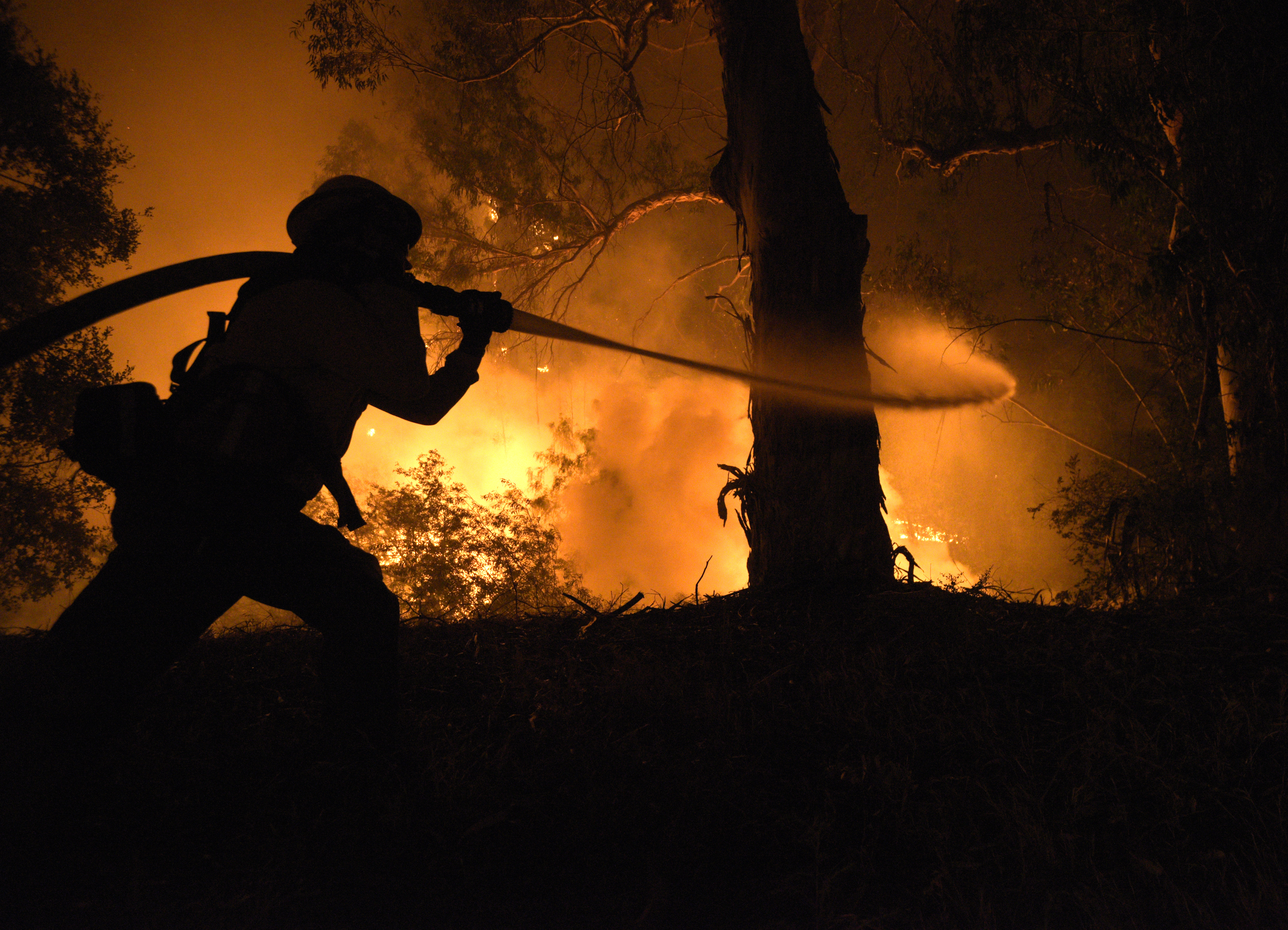Power Lines Started Holiday Fire in Goleta
Santa Barbara County Fire Report Documents Origin at Edison Conductors

Electrical wires owned by Southern California Edison, high winds, and tree branches started the Holiday Fire 14 months ago, investigators reported on Friday. The fire, which broke out on Friday, July 6, 2018, at around 8:30 in the evening, was spurred by 30 mph sundowners and a heat that eerily rose as night fell. It destroyed 10 homes and 13 other structures, damaged three homes, and forced the evacuation of much of the Goleta foothills, as well as a wildlife rescue, as it burned across 113 acres.
The trees and poles were on private property at the top of Fairview Avenue. The day’s heat registered 100 degrees, and as evening approached, the winds blasted harder as the land rose upward. Interviews with two dozen neighbors revealed that various people saw a bright flash, fire climbing a power pole, a wall of flames to their north, and power fluctuations just before they noticed the fire.
An investigator with the California Public Utilities Commission, to which Edison must report power anomalies, told Capt. James Snodgrass, a Santa Barbara County Fire investigator, that amperage fluctuations began at 8:17 p.m. and a complete loss at 8:42 p.m. Smart Meter readings at five households showed a loss of power at 8:41 p.m. and restoration at 8:42 p.m. It was lost permanently at 9:19 p.m. The first report of fire was called in at 8:38 p.m.
Lightning, camping, cigarettes, debris burning, car exhaust, kids playing, fireworks, welding, grinding, and firearms were all ruled out as ignition sources in the 74-page report of investigation. The trees and palms looked to be cleared to about four feet from the wires, the report stated, with the previous maintenance taking place around April 3, 2018.
Residents with home weather stations reported temperatures of 103 and 108 degrees that night, 9 percent humidity, and wind gusts of about 30-40 mph. Across Southern California, heat records were surpassed that day; Van Nuys Airport recorded a high of 117 degrees. In the foothills north of Goleta, high heat scorched new avocado growth and killed some farm animals in a weather event once known as a “simoom,” which hadn’t been witnessed locally since 1859.



